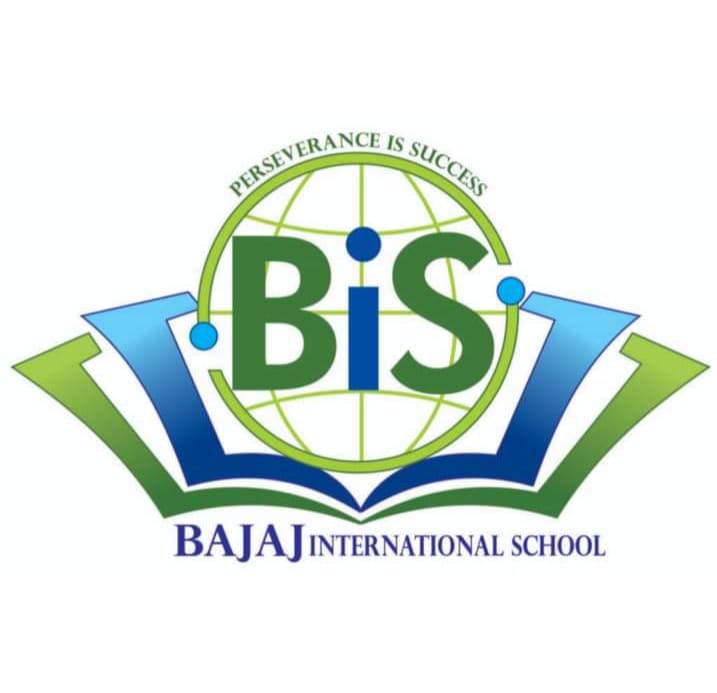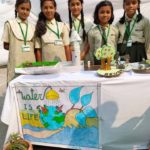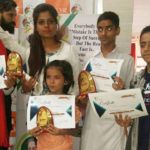CURRICULUM
1. PRINCIPLES
1The curriculum refers to the lessons and academic content to be taught to a learner in the school. In empirical terms, it may be regarded as the sum total of a planned set of educational experiences provided to a learner by a school. It encompasses general objectives of learning, courses of study, subject-wise instructional objectives and content, pedagogical practices and assessment guidelines. The curriculum is based on National Curriculum Framework-2005 and seeks to provide opportunities for students to achieve excellence in learning.
2. Salient Features of the School Curriculum
1. Provide ample scope for physical, intellectual and social development of students;
2. Enlist general and specific teaching and assessment objectives;
3. Uphold Constitutional values such as Socialism, Secularism, Democracy, Republican Character, Justice, Liberty, Equality, Fraternity, Human Dignity of Individual and the Unity and integrity of the Nation by encouraging values-based learning activities;
4. Nurture Life-Skills by prescribing curricular and co-curricular activities to help improve self-esteem, empathy towards others and different cultures etc.;
5. Integrate innovations in pedagogy, knowledge and application, such as human sciences with technological innovations to keep pace with the global trends in various disciplines;
6. Promote inclusive education by providing equal opportunities to all students;
7. Equally emphasize Co-scholastic areas of Art Education and Health and Physical Education
Objectives of the Curriculum :
1. Achieve cognitive, affective and psychomotor excellence;
2. Enhance self-awareness and explore innate potential;
3. Promote Life Skills, goal setting, and lifelong learning;
4. Inculcate values and foster cultural learning and international understanding in an inter dependent society;
5. Acquire the ability to utilize technology and information for the betterment of humankind;
6. Strengthen knowledge and attitude related to livelihood skills;
7. Develop the ability to appreciate art and show case talents;
8. Promote physical fitness, health and well- being
4. 1 Scholastic Areas:-
The curriculum envisages individualized learning acumen and seeks to explore the potential of students in acquiring substantial acknowledge and skills through academic rigors. With greater academic orientation and research skills in core academic areas, students would evolve as judicious young adults with a sense of real self-estimate having true values and principles. The scholastic areas are as follows:
(i) Languages include Hindi, English and other 36 languages (detailed in Curriculum Volume II). The curricula in languages focus on listening, speaking, reading and writing skills and, hence, develop effective communicative proficiencies. Learners use language to comprehend, acquire and communicate ideas in an effective manner.
(ii) Social Science (Geography, History, Economics and Political Science) intends to make learners understand their cultural, geographical and historical milieus and gain in-depth knowledge, attitude, skills and values necessary to bring about transformation for a better world. Social Science includes the learning of history and culture, geographical environment, global institutions, constitutional values and norms, politics, economy, interpersonal and societal interactions, civic responsibilities and the incorporation of the above-mentioned learning. Learners appreciate and value everyone’s right to feel respected and safe, and, also understand their Fundamental Rights and Duties and behave responsibly in the society.
(iii) Science (Biology, Chemistry and Physics) includes gaining knowledge about Food, Materials, The World of The Living, How Things Work, Moving Things, People and Ideas, Natural Phenomenon and Natural Resources. The focus is on knowledge and skills to develop a scientific attitude and to use and apply such knowledge for improving the quality of life. This learning can be used to analyze, evaluate, synthesize and create. Learners understand and appreciate the physical, biological and technological world and acquire the knowledge and develop attitude, skills and values to make rational decisions in relation to it.
(iv) Mathematics includes acquiring the concepts related to number sense, operation sense, computation, measurement, geometry, probability and statistics, the skill to calculate and organize, and the ability to apply this knowledge and acquired skills in their daily life. It also includes understanding of the principles of reasoning and problem solving. Children learn to rationalize and reason about pre-defined arrangements, norms and relationships in order to comprehend, decode, validate and develop relevant
4.2 Co- Scholastic Areas:- Only a healthy child can learn effectively and good health leads to better learning. Many activities are necessary for development of the affective and psychomotor domain. The activities like games and sport, art and music, craft work etc. are termed as co-scholastic activities. The term co-scholastic activities is used for both cognitive and non-cognitive development that can take place by exposing the child to the scholastic and nonscholastic subjects.
Art Education including local art, craft, literature and skills ,Health and Physical Education, Yoga, traditional games, indigenous sports, NCC, Scouts and Guides, Martial Arts etc. are integral parts of the curriculum and to be included in the routine of the schools for the holistic development of children. These are detailed below:
- Art Education:- entails instruction in various art forms (visual as well as performing) with an aim to help children develop an interest for arts and encourage them to enthusiastically participate in related activities, thus, promoting abilities such as imagination, creativity, valuing arts and cultural heritage. In addition, Arts should be integrated with other subjects to promote creative thinking and expression
- Health and Physical Education:- focuses on holistic development, both mental and physical, understanding the importance of physical fitness, health, well being and the factors that contribute to them. Focus of this area is on helping children develop a positive attitude and commitment to lifelong, healthy active living and the capacity to live satisfying, productive lives with the help of health management, indigenous sports, yoga, NCC, self-defense, fitness and life style choices.
- Work Experience : The Work Experience has been subsumed in the Health and Physical Education, however, it is an integral part of the curriculum and is given as much as focus as Health and Physical Education.
5. Integrating all areas of learning :
All these seven areas are to be integrated with each other in terms of knowledge ,skills (life and livelihood), comprehension, values and attitudes. Children should get opportunities to think laterally, critically, identify opportunities, challenge their potential and be open to new ideas. Children should be engaged in practices that promote physical, cognitive, emotional and social development and wellbeing, connect different areas of knowledge, application and values with their own lives and the world around them The holistic nature of human learning and knowledge should be brought forth while transacting the curriculum to make them good citizens who can contribute in making the world a happy place.








